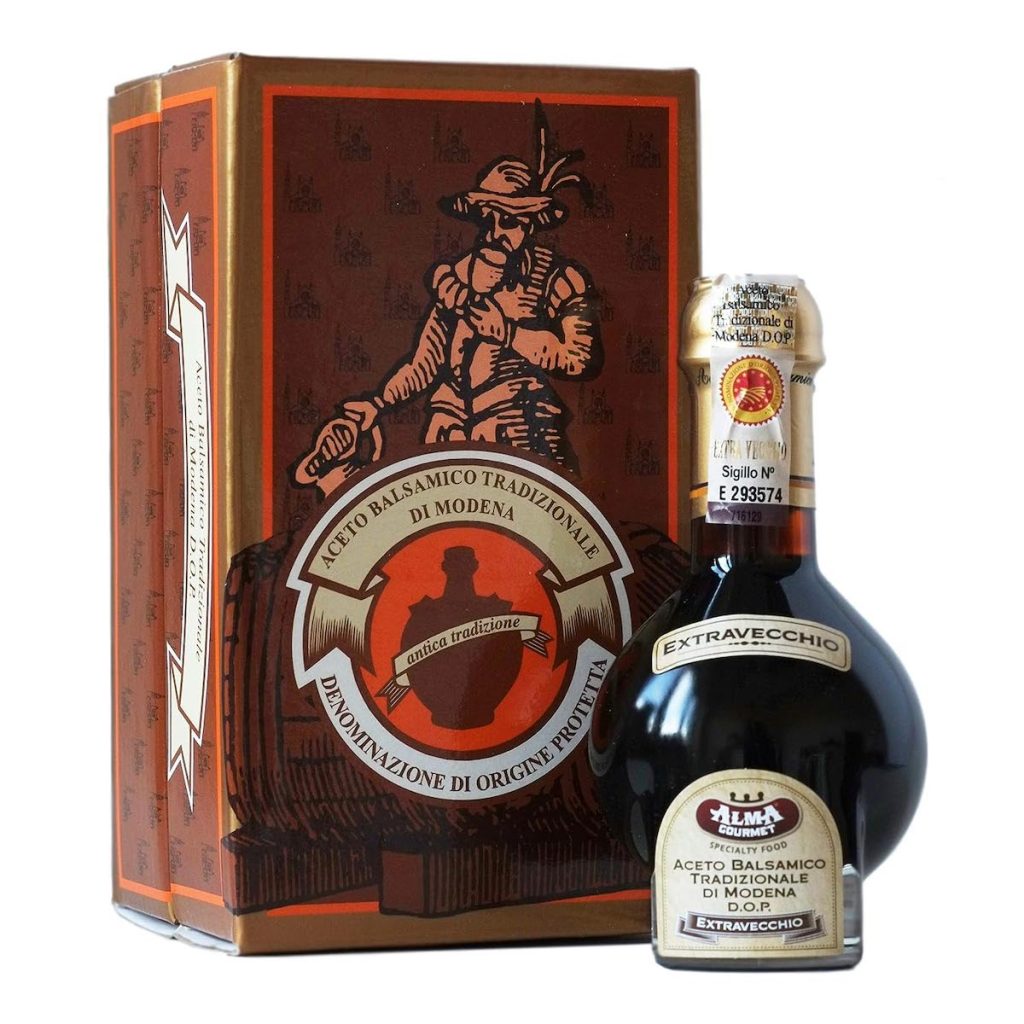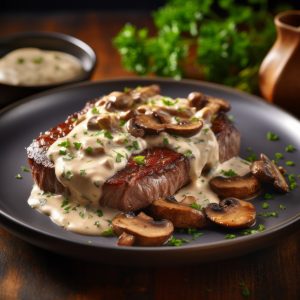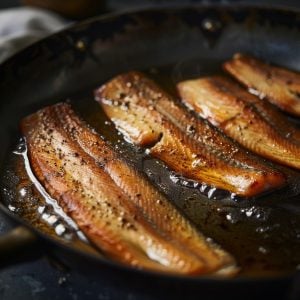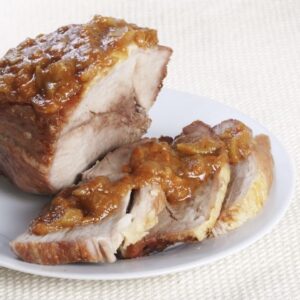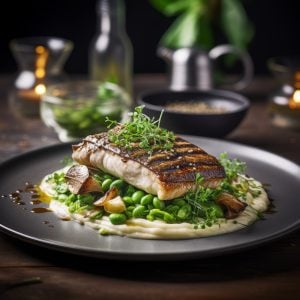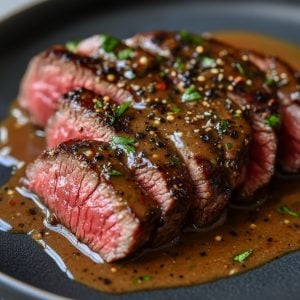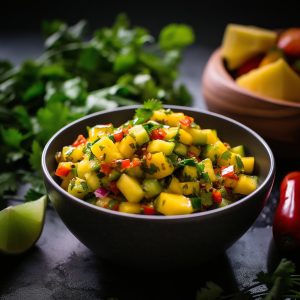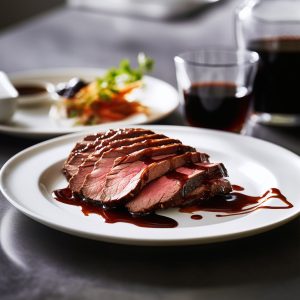Everything You Need To Know About Balsamic Vinegar
We enjoy balsamic vinegar year-round, pairing it with tomato, mozzarella, and basil, or drizzling it over grilled chicken breasts for an extra layer of flavor. I’ve tried everything from expensive aged balsamic to the more affordable options you find in supermarkets, and plenty in between.
In this post, I will describe this remarkable vinegar, share its history, and explain the differences between the expensive and less expensive brands. I hope you enjoy learning about it.
What is balsamic vinegar?
Balsamic vinegar is made from pressed grapes, typically Trebbiano and Lambrusco varieties. It undergoes aging in wooden barrels for several years, developing its signature sweet, sour, and complex flavor. Commonly, people use balsamic vinegar in salad dressings, marinades, and reductions.
How is it made?
To make balsamic vinegar, producers cook down pressed grapes—usually Trebbiano or Lambrusco—into a concentrated syrup. This syrup is fermented and aged in wooden barrels for several years. The traditional process involves aging in a variety of woods, such as chestnut, oak, mulberry, and cherry, which impart distinct flavors to the vinegar. This aging process helps concentrate the flavors, creating the complex sweet, sour taste balsamic vinegar is known for.
Mass-produced balsamic vinegar may include wine vinegar or caramel and may not undergo the traditional aging process.
What is its history?
Balsamic vinegar has a rich history dating back to Italy’s Middle Ages. Noble families in Modena and Reggio Emilia first produced it to preserve excess grape harvests. Over time, it became a prized condiment and a symbol of wealth, with some families guarding their production methods. Today, balsamic vinegar is enjoyed worldwide, with both traditional and mass-produced versions available.
How is it different from red wine vinegar?
Balsamic vinegar and red wine vinegar differ in several ways:
- Origin: Balsamic vinegar is made from pressed grapes, while red wine vinegar is made from red wine.
- Flavor: Balsamic vinegar has a sweet, complex flavor due to the aging process in wooden barrels, whereas red wine vinegar has a more straightforward, acidic taste.
- Texture: Balsamic vinegar is thicker and more syrupy than red wine vinegar.
- Uses: Balsamic vinegar is often used as a condiment or flavor enhancer, while red wine vinegar is commonly used in salad dressings, marinades, and sauces.
- Production method: Traditional balsamic vinegar undergoes a multi-step aging process in wooden barrels, whereas red wine vinegar is produced by fermenting red wine into vinegar.
Aging and what it does to the flavor?
The aging process is essential for developing balsamic vinegar’s sweet and sour flavor profile. As it ages, the vinegar thickens and becomes sweeter due to the evaporation of some of its liquid, concentrating its flavor into a syrup-like consistency.
Different types of wood used during aging impart unique flavors to the vinegar, while the growth of acetobacter bacteria contributes to its tangy and sour notes. The aging process is crucial for developing the distinct flavor, aroma, and consistency that characterize traditional balsamic vinegar.
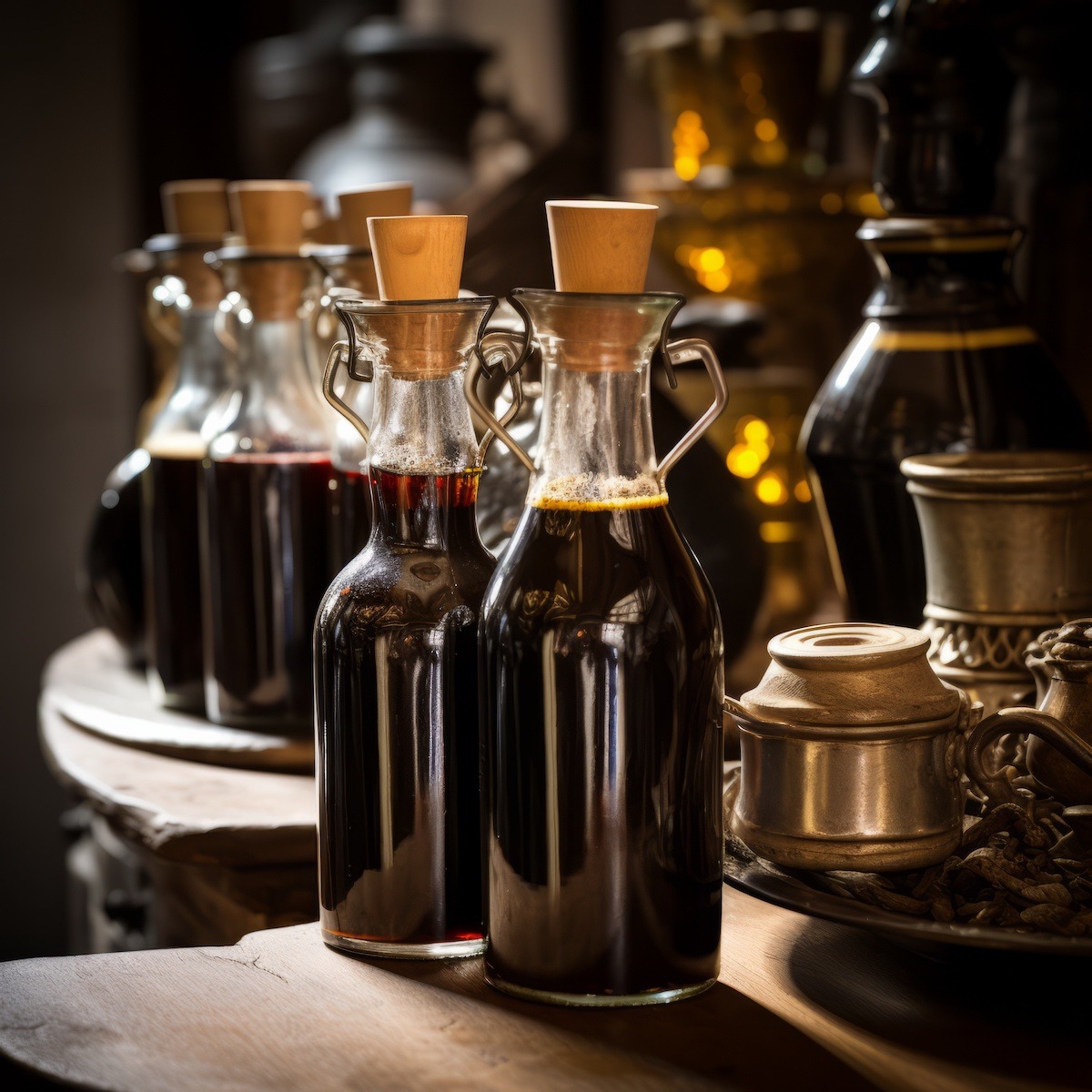
What is added to balsamic vinegar to make it less expensive?
Mass-produced and commercial balsamic vinegar is often made to be less expensive than traditional balsamic vinegar. To achieve this, they may use lower-quality grapes or add other ingredients to the vinegar, such as wine vinegar, caramel, or sugar.
Some mass-produced and commercial balsamic vinegar may also contain thickening agents, such as corn starch or glucose syrup, to create the syrupy consistency characteristic of balsamic vinegar. Additionally, they may contain artificial flavors, colors, or preservatives to enhance the flavor and extend the product’s shelf life.
What are its health benefits?
Balsamic vinegar is often praised for its potential health benefits, which include:
- Antioxidant properties: Balsamic vinegar contains antioxidants like polyphenols, which help protect the body from oxidative stress and cellular damage.
- Supporting healthy digestion: It can increase digestive enzyme production, improving food digestion and reducing symptoms like heartburn and bloating.
- Lowering blood sugar levels: Some studies suggest that balsamic vinegar can lower blood sugar levels and improve insulin sensitivity, especially in people with type 2 diabetes.
- Supporting heart health: It contains anti-inflammatory and anti-atherosclerotic compounds, which support heart health.
- Assisting with weight management: Research suggests that balsamic vinegar may help with weight loss by increasing feelings of fullness and reducing overall food intake.
It’s important to note that more research is needed to understand balsamic vinegar’s health benefits fully. Also, not all balsamic vinegar is the same, and some cheaper versions may contain added sugars or other ingredients that could negate its potential health benefits.
How do you know if your balsamic vinegar is authentic?
To determine if your balsamic vinegar is authentic, look for specific characteristics and certifications:
- Label: Traditional balsamic vinegar is often labeled “Aceto Balsamico Tradizionale di Modena” or “Aceto Balsamico Tradizionale di Reggio Emilia,” signifying that it was made in either Modena or Reggio Emilia, Italy, following strict production standards. The label should also state that it has been aged for at least 12 years.
- Appearance: Authentic balsamic vinegar should be thick, syrupy, and rich in color.
- Flavor: It should have a complex, well-balanced flavor with both sweet and sour notes.
- Price: The cost reflects the long aging process and the use of high-quality ingredients. If the price seems too good to be true, the vinegar may not be authentic.
- Certification: Look for “DOP” (Denominazione di Origine Protetta) or “IGP” (Indicazione Geografica Protetta) seals, which indicate that the vinegar has met strict production standards and comes from a specific geographic region.
Ways to use balsamic vinegar.
Balsamic vinegar is a versatile ingredient that adds depth and complexity to many dishes. Here are some ideas for using it in cooking:
- Salad dressing: Combine balsamic vinegar, olive oil, salt, and pepper to make a simple yet flavorful salad dressing.
- Glaze: Simmer balsamic vinegar with sugar and seasonings to create a sweet-savory glaze for meats, fruits, and vegetables.
- Marinade: Combine balsamic vinegar with herbs, spices, and oils to create a marinade for meats and vegetables.
- Sauce: Reduce balsamic vinegar with wine, stock, or fruit juice to make a flavorful sauce for meats, fish, and vegetables.
- Reduction: Reduce balsamic vinegar to a syrupy consistency and drizzle it over dishes containing meat, cheese, or fruits.
- Grilled vegetables: Brush balsamic vinegar onto vegetables before grilling to enhance their flavor.
- Desserts: Add balsamic vinegar to desserts like sorbets, ice creams, or fruit salads for a sweet and tangy twist.
Are all balsamic vinegar created equally?
No, not all balsamic vinegars are the same. They differ greatly in quality, flavor, and authenticity:
- Traditional balsamic vinegar: Produced in Modena and Reggio Emilia, Italy, following strict regulations and aging in wooden barrels. This vinegar is prized for its complex, rich flavor and often comes in small bottles at a premium price.
- Mass-produced balsamic vinegar: Made with a quicker production method, often involving wine vinegar or caramel. This vinegar undergoes a different process than traditional aging and is typically sold at a lower price.
- Commercial balsamic vinegar: Made with cheaper ingredients and often lacking strict production regulations, this type may contain thickeners and artificial flavors. It’s typically sold at a lower price point.
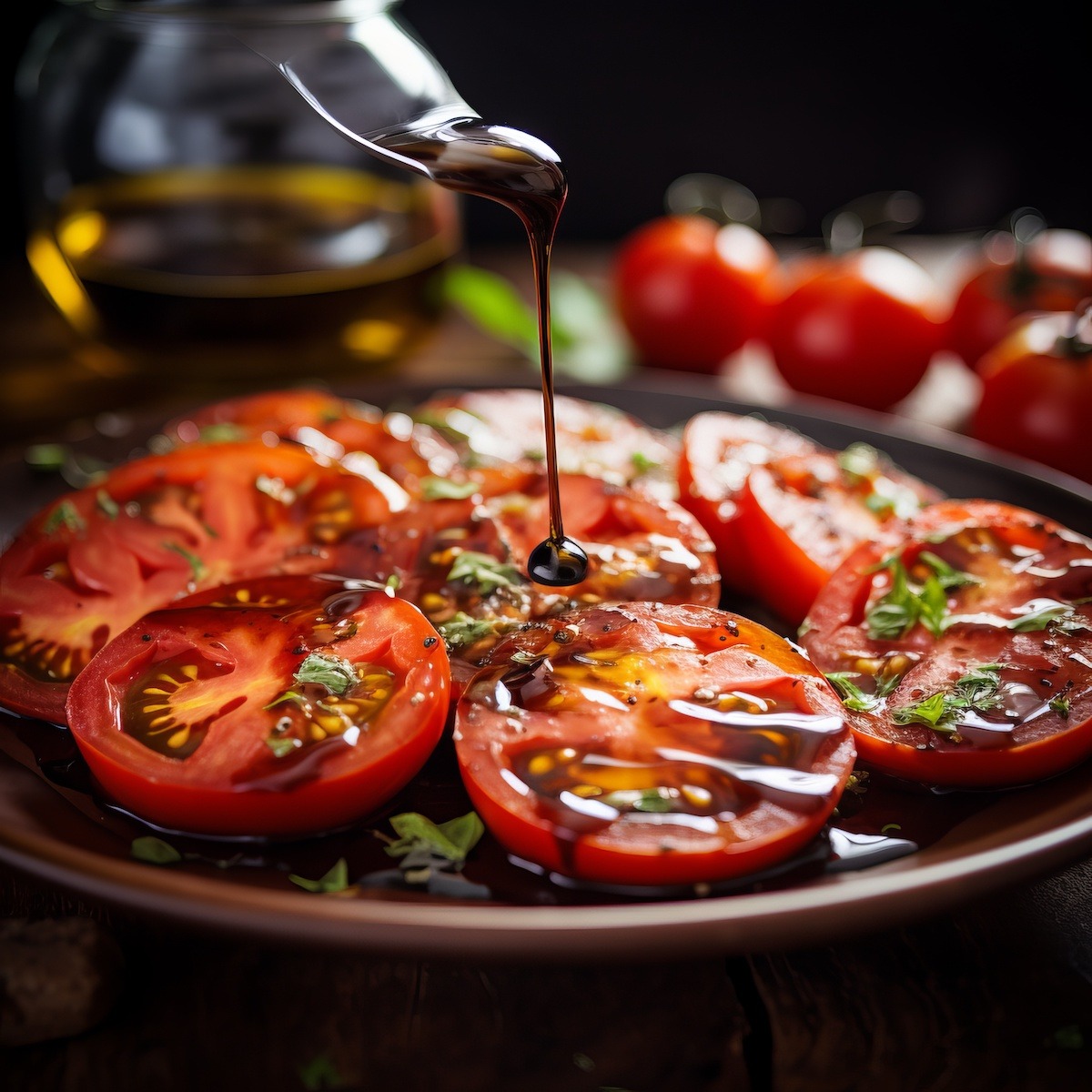
Varieties
Several different varieties of balsamic vinegar offer unique flavor profiles and production methods:
- Traditional Balsamic Vinegar (Aceto Balsamico Tradizionale): This high-quality balsamic vinegar is aged for a minimum of 12 years and is made in Modena and Reggio Emilia, Italy, following strict production regulations. It is known for its rich, complex flavor and dark color.
- Condimento Balsamico: Aged for at least three years, this vinegar is made similarly to traditional balsamic but may include added wine vinegar. It is a more affordable alternative to traditional balsamic vinegar and is used as a condiment.
- Aged Balsamic Vinegar: This vinegar is made from wine vinegar aged in wooden barrels. It develops a more complex flavor and consistency and is typically less expensive than traditional balsamic vinegar.
- White Balsamic Vinegar: Made from white grapes, this vinegar is lighter in color and has a milder, sweeter flavor than traditional balsamic vinegar.
- Flavored Balsamic Vinegar: This vinegar can be flavored with natural or artificial flavors, such as fruit, spices, or herbs. It enhances dishes or serves as a condiment.
What does it taste like?
Balsamic vinegar has a unique, complex flavor that blends sweet and sour notes. The flavor varies depending on the vinegar’s age, the grapes used, and the production methods.
- Traditional balsamic vinegar, aged for at least 12 years, offers a rich, well-balanced flavor with deep sweet and sour notes. Its aging in wood barrels gives it a smooth, syrupy consistency and dark color.
- Younger balsamic vinegars, such as condimento balsamico, have a milder flavor and lighter color. These vinegars may taste sharper and more acidic due to their shorter aging process.
- White balsamic vinegar has a milder, sweeter flavor, which results from using white grapes and a lighter aging process.
What does balsamic vinegar cost?
Balsamic vinegar prices vary based on factors like age, quality, and origin:
- Traditional balsamic vinegar, aged for at least 12 years, can cost upwards of $50 per bottle. It is made from premium ingredients using traditional methods.
- Younger balsamic vinegar, like condimento balsamico, typically costs between $10 and $30 per bottle. These vinegars are aged for a shorter period and may have a milder flavor.
- Lower-quality balsamic vinegar is made from cheaper ingredients and may contain added sugars or artificial flavorings. These are usually sold for a few dollars to $10 per bottle.
What is the oldest balsamic vinegar available to buy?
The oldest balsamic vinegar you can buy is generally considered traditional balsamic vinegar, aged for at least 12 years. Some traditional balsamic vinegars are aged for up to 25 years or more. These vinegars are exceptional but come with a hefty price tag.
Older balsamic vinegars, often reserved for special occasions or gifts, are rare and can cost several hundred dollars per bottle.
Where do the best balsamic vinegars come from?
The best balsamic vinegar typically comes from the Modena region of Italy, where the “Traditional Balsamic Vinegar of Modena” (TBV) is produced. This region has a long history of producing high-quality balsamic vinegar, which is made by cooking Trebbiano and Lambrusco grapes into a syrup called “grape must. ” The syrup is then aged in wooden barrels for a minimum of 12 years.
The aging process, the type of wood used for the barrels, and the grape blend all contribute to the unique flavor profile and quality of TBV, making it one of the finest examples of Italian cuisine. While balsamic vinegars from other Italian regions and countries like Spain and the U.S. can also be excellent, products labeled as “Traditional Balsamic Vinegar of Modena” or carrying quality certifications are ideal.
Substitutes
If you don’t have balsamic vinegar on hand or need an alternative, consider these substitutes:
- Red wine vinegar: An excellent substitute for balsamic vinegar, especially in recipes needing tang and acidity.
- Apple cider vinegar: Milder in flavor than balsamic but works well as a substitute.
- Sherry vinegar: Its nutty flavor complements many dishes and serves as a good replacement.
- Rice vinegar: Sweet and mild, rice vinegar works well in lighter dishes.
- White wine vinegar: Mild and light-colored, it’s a good substitute when the vinegar flavor isn’t the main focus.
Remember that these substitutes will differ in sweetness and depth of flavor from traditional balsamic vinegar, but they still provide the necessary acidity and tanginess.
Balsamic Vinegar Glaze
Ingredients
- 1 cup balsamic vinegar
- 2 tablespoons sugar
- 1 tablespoon honey
- ½ teaspoon salt
- ¼ teaspoon black pepper
Instructions
- Combine the balsamic vinegar, sugar, honey, salt, and pepper in a medium saucepan.
- Place the saucepan over medium heat and bring the mixture to a boil.
- Reduce the heat to low and allow the mixture to simmer for 10-15 minutes or until it has thickened to a syrup-like consistency.
- Remove the saucepan from heat and allow the glaze to cool to room temperature.
- Use the glaze as a drizzle for meats, fruits, or vegetables, or store it in an airtight container in the refrigerator for later use.

